Australia is stuck in its worst productivity growth on record. Data journalist Juliette O’Brien examines what’s holding the economy back – and what it will take to fix it.
This story is featured in Issue 18 of Forbes Australia. Tap here to secure your copy.
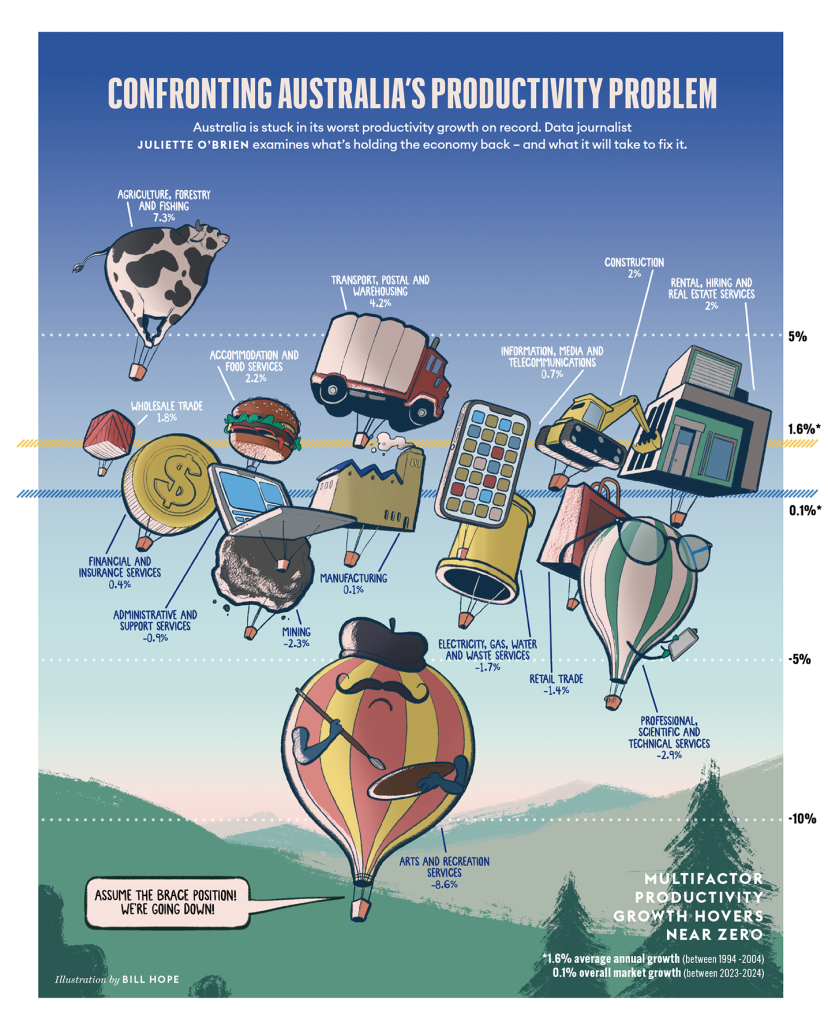
Australians are working harder than ever. ABS data shows that the number of hours worked in 2024 jumped 11.9% since 2021.
When a country puts in more labour, output should rise. If output grows faster than inputs, productivity improves. But in Australia’s case, output has barely kept pace – or fallen behind.
Labour productivity tumbled 1% in the year to March and multi-factor productivity (which measures the output from both labour and capital) barely budged, rising just 0.1% in 2023-24 after a 0.9% drop the year before (Chart 2).
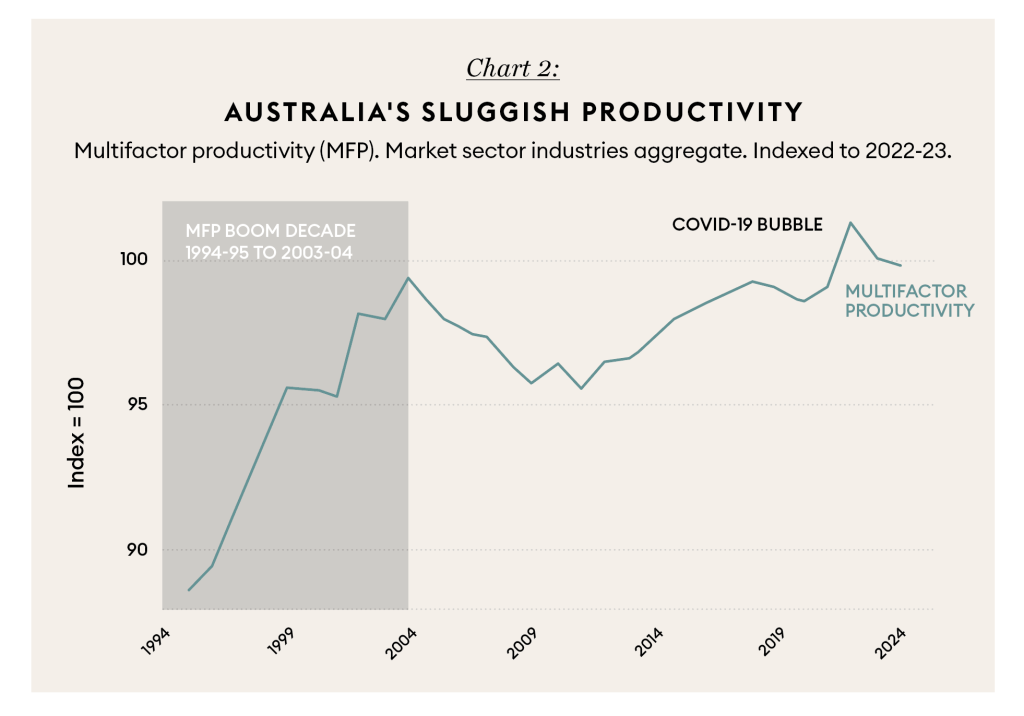
Australia is doing less, with more.
Productivity is the main engine of the economy. Other drivers, such as population, labour, and government spending, can all lift returns temporarily, but only productivity delivers sustainable growth. A 2024 report from the McKinsey Global Institute says the world needs productivity growth more than ever. “It is the only way to raise living standards amid aging, the energy transition, supply chain reconfiguration, and inflated global balance sheets.”
Australia’s golden era for multi-factor productivity (MFP) ran from 1994 to 2004, when national productivity grew by an average of 1.6% a year. This high watermark is shown in Chart 1 (illustration) by the yellow dashed line.
Last year’s anaemic 0.1% gain (marked by the blue dashed line) reflects the national average, but outcomes diverge by sector. Agriculture, forestry and fishing outperformed the rest, climbing 7.3% in 2023–24. At the other end, arts and recreation services plunged 8.6%. Mining marked its fourth straight year of falling MFP.
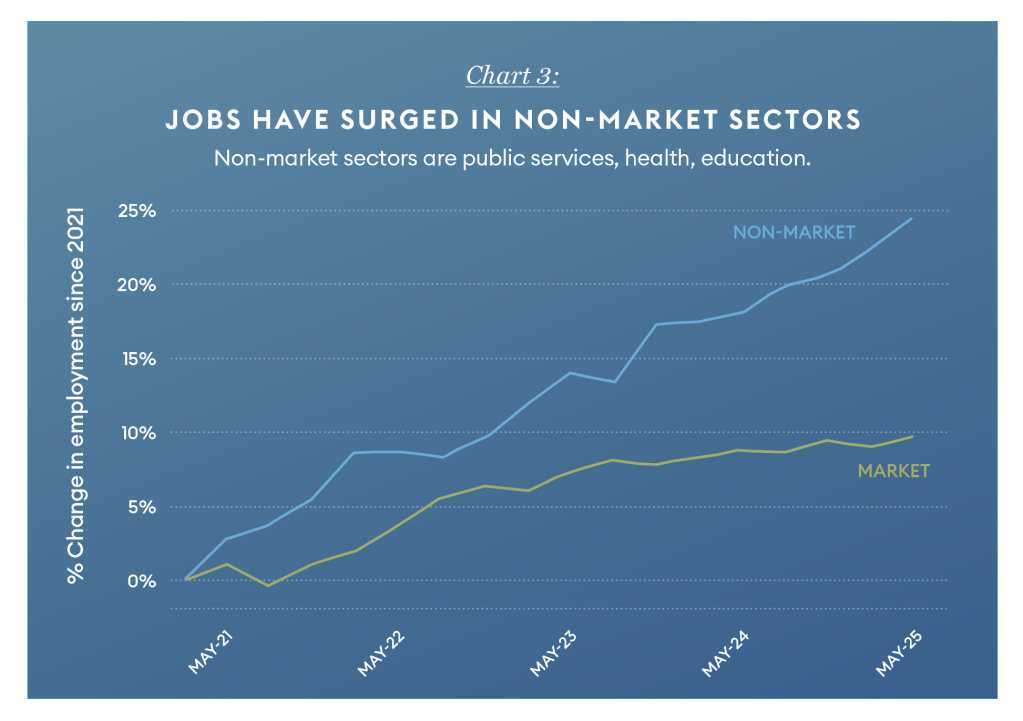
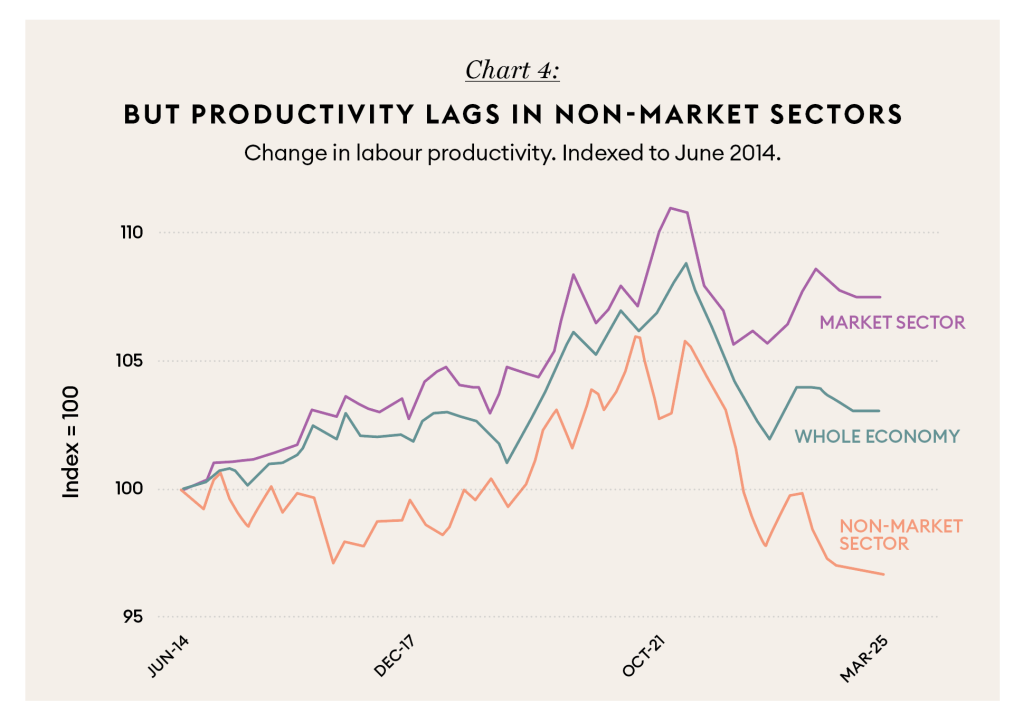
Chart 1 excludes three industries: public services, health, and education. These are ‘non-market’ sectors because output is measured by costs, not prices. Together, they are one of the fastest-growing parts of Australia’s economy. Since 2021, employment has surged collectively by 24% – more than twice the 9.6% growth in market sectors (Chart 3). But, while they are using more labour, these sectors are failing to deliver results. Analysis by the Productivity Commission shows non-market sectors going backwards on labour productivity since 2014. (Chart 4).
Another drag on productivity, according to the Productivity Commission, is listless uptake of new technology. ABS data classifies businesses as “innovation-active” if they introduce, develop or even scrap any innovation at all. In the two years to June 2023, fewer than half of all Australia’s businesses (46%) reported being innovation-active, down from 52% in the comparable period in 2021.
The Federal Treasury compared Australian firms in manufacturing and services with the top 5% of global performers in those industries, known as the “global frontier” (Chart 5). It found a widening labour productivity gap, suggesting Australian businesses are slower to adopt new technologies and processes. Between 2002 and 2016, labour productivity among global frontier firms rose 60%, compared to just 25% for Australia’s top firms. The rest (labelled “laggards”) managed only 15%.
The Treasury also warned of weakening competitive pressure, as Australian industries turn more concentrated. This may have “lowered the impetus for firms to adopt new technologies and improve their productivity,” it said. Research by the e61 Institute shows the average market share held by the top four firms in each industry (known as the CR4) climbed by about 2.5 percentage points between 2007 and 2020 (Chart 6). Industry-level analysis reveals that concentration in Australia far outstrips that in the United States, with the top four firms capturing a larger share of sales across multiple sectors – clear evidence of market dominance. (Chart 7).
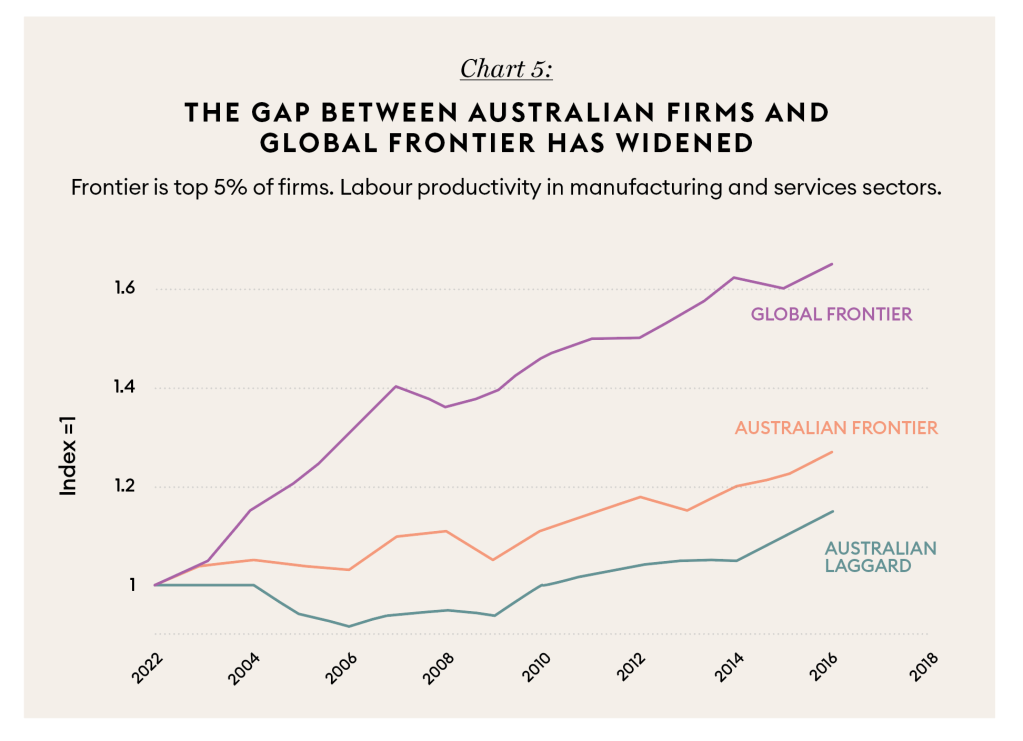
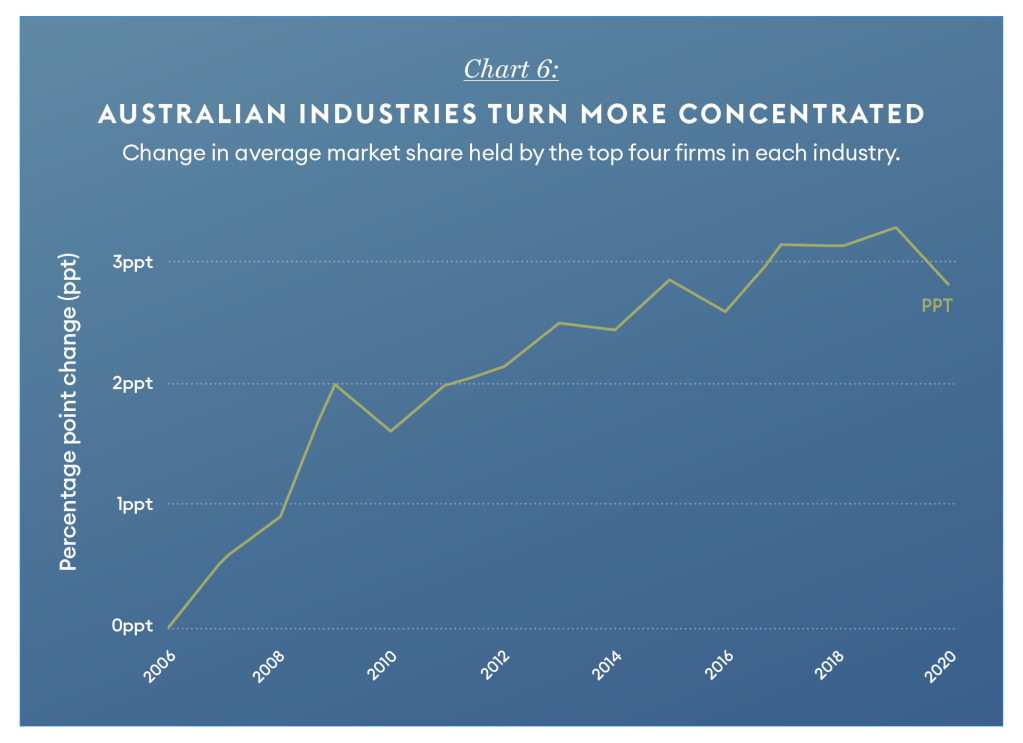

As Australia confronts its productivity slump, the Prime Minister has convened a roundtable of experts to search for solutions. Alex Robson, Deputy Chair of the Productivity Commission, said, “Our productivity problem is no flash in the pan. It is a long-term, structural challenge that requires dedicated attention from business and government.” Identifying the problem was easy. Solving it won’t be.
This article represents the views only of the subject and should not be regarded as the provision of advice of any nature from Forbes Australia. The article is intended to provide general information only and does not take into account your individual objectives, financial situation or needs. Past performance is not necessarily indicative of future performance. You should seek independent financial and tax advice before making any decision based on this information, the views or information expressed in this article.
Look back on the week that was with hand-picked articles from Australia and around the world. Sign up to the Forbes Australia newsletter here or become a member here.



